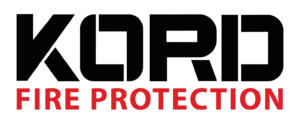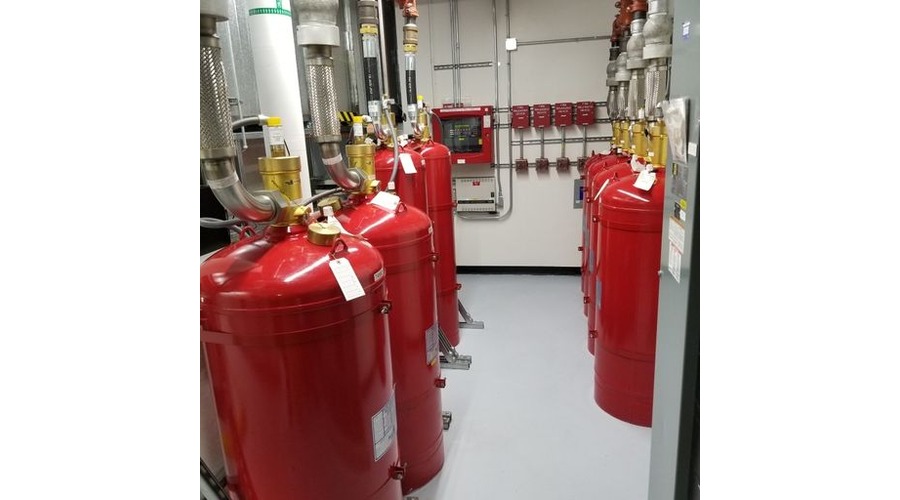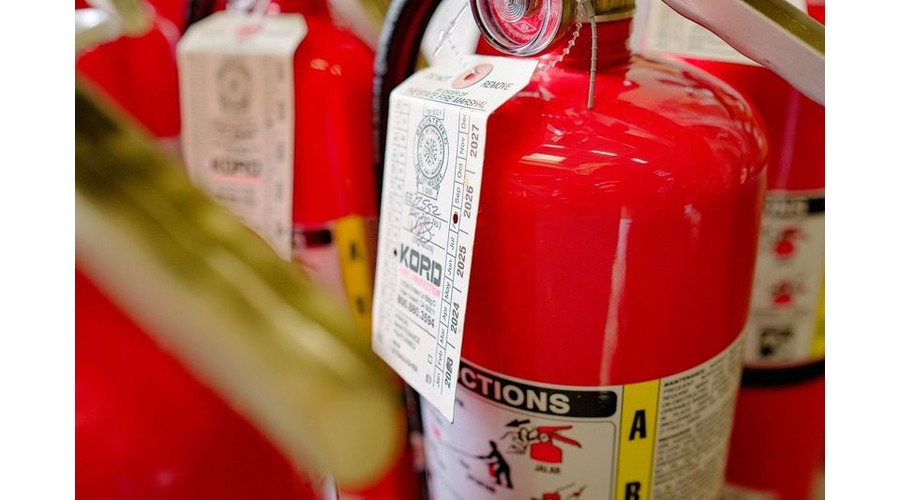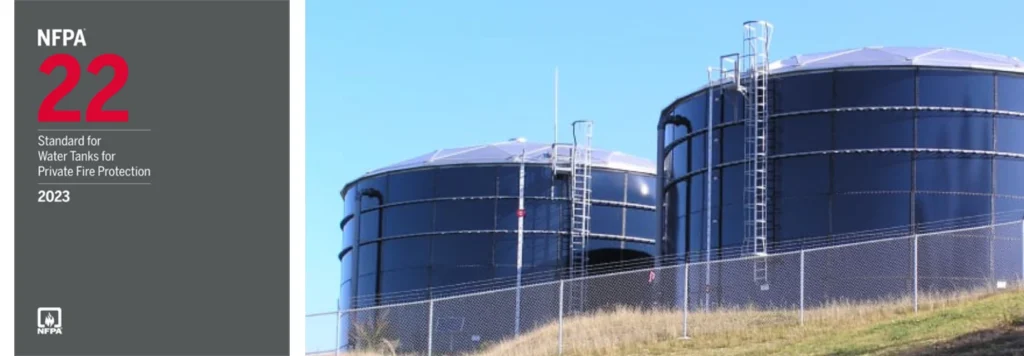

How NFPA 22 Regulates Fire Protection Water Tanks: What You Need to Know
National Fire Protection Association (NFPA) 22 covers the design, construction, installation, and upkeep of fire protection water tanks. “NFPA 22: Standard for Water Tanks for Private Fire Protection” is most relevant for remote businesses or residences, or those with unreliable municipal water resources. This allows property owners to provide their own water source for fire suppression and sprinkler systems when it’s not possible to hook into a city’s water system.
NFPA 22 Overview
NFPA 22 regulations are intended to ensure that the water tanks people rely on for fire protection will function when they’re needed. To do this, they need to be structurally sound and easily accessible when a fire breaks out. Water tanks can be either “NFPA 22 compliant” or “NFPA 22 equivalent.” Compliant tanks are those that meet the exact specifications outlined in NFPA 22, while equivalent tanks meet or exceed NFPA 22’s requirements.
To achieve equivalency, you must submit your tank design and technical documentation to the “authority having jurisdiction” (AHJ) — generally the agency that enforces fire codes in your area.
NFPA 22 Compliance Requirements
NFPA 22 outlines specific requirements for water storage tanks that are serving as an acceptable water source for sprinkler systems. It includes the following.
Load Requirements
Water tanks need to be able to withstand forces from harsh weather and natural disasters, such as snow, wind, and earthquakes, as well as hold up to the load of the water they store.
NFPA 22 sets standards for both dead and live loads. These technical specifications must be calculated based on International Building Code (IBC) Risk Category IV because a water tank is considered critical safety infrastructure. This category sets higher load requirements compared to standard buildings.
Roof Design
To prevent problems with poor drainage on flat roofs while still allowing easy access, NFPA 22 sets uniform standards for roofs with a slope of less than 30 degrees. Regardless of snow and ice loads, these roofs must support a uniform weight of 25 pounds per square foot.
All manholes and other accessories that require access must have a railing that complies with Occupational Safety and Health Administration (OSHA) standards. Airtight roofs, such as steel, must have a vent above the maximum water level that includes a corrosion-resistant screen to avoid contamination.
Tank Design
NFPA 22 covers three types of water tanks: elevated, at or below grade, and pressure. These tanks can be made of steel, wood, concrete, coated materials, or fiberglass-reinforced plastics.
The tanks must be able to hold enough water to control or suppress a fire in the building or buildings it protects. You must check and maintain the water level either by using an alarm that alerts you if the water drops below the approved level or through monthly visual inspections. If you use an alarm, you still need to conduct quarterly visual inspections.
Contractor’s and Manufacturer’s Responsibilities
The contractor is responsible for handling the installation under expert guidance and for testing the tank once it’s installed. The contractor also has to supply plans and stress sheets to the AHJ to obtain building permits. The water tank manufacturer must issue at least a one-year warranty from the date of completion.
Tank Components
NFPA 22-compliant tanks must have the following components:
- Anti-vortex plates: in discharge outlets on tanks used as a suction source for a fire pump
- Water-level gauge: for monitoring the water level
- Confined-space entry signs: to warn of confined-space danger
- Coatings: approved materials for coating tanks
- Freeze protection: in areas where tanks may freeze
- Automatic fill assembly: to connect to a water supply that can refill the tank within eight hours
- Level and temperature sensors: for pressure tanks
- Overflow pipes: to prevent damage to the foundation
- Drains: to allow for hose connections
- Manhole access: not required by a practical necessity
- Roof vents: for steel, airtight tanks
- Lightning protection: installed according to NFPA 780
- Shutoff valves: for tanks used as suction sources
NFPA 22 FAQS
Trust Kord Fire Protection for NFPA 22-Compliant Water Tanks
NFPA 22 regulations ensure there’s a reliable water source for fire suppression systems in areas where the available water supply is insufficient.
Kord Fire Protection has been installing and maintaining fire suppression systems in Southern California for more than 20 years. Our expert technicians are thoroughly trained on all applicable rules and regulations to ensure your system meets the highest safety and quality standards.
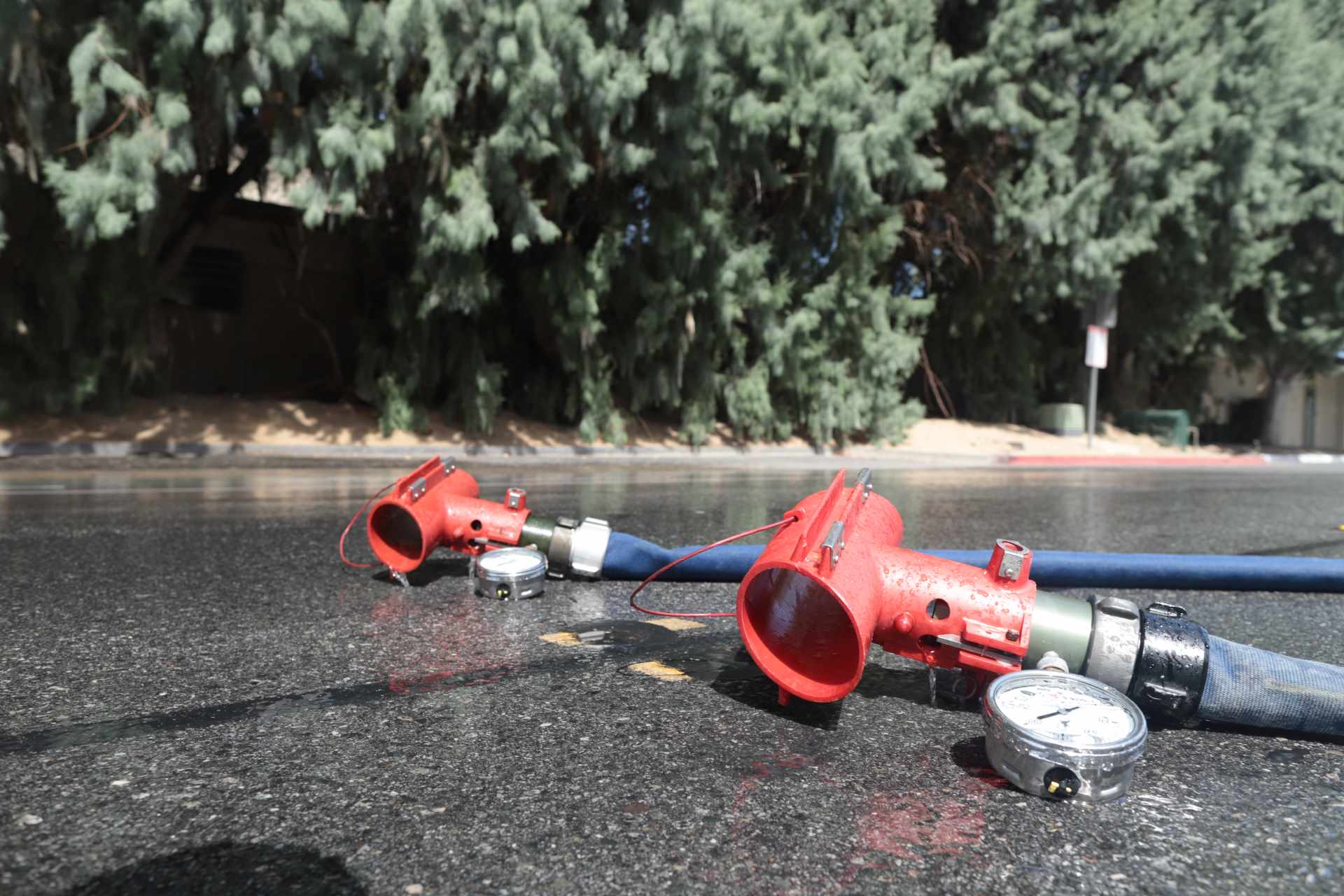

Protect Your Property
Get the latest fire safety tips delivered straight to your inbox.
